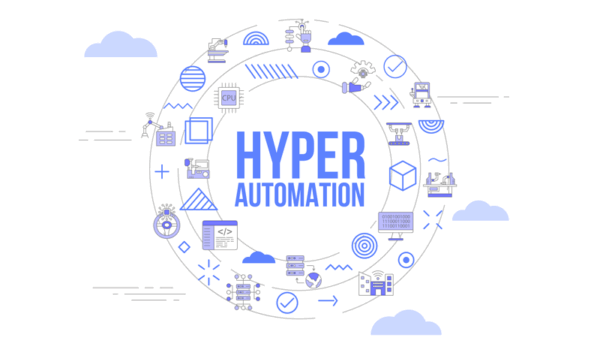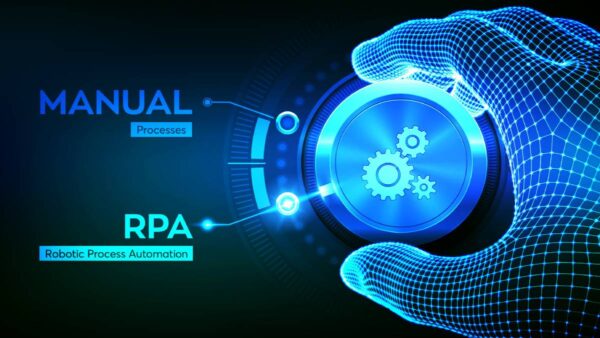Redefining Efficiency: The Rise of Hyperautomation in Modern Business
In today’s fast-paced digital era, hyperautomation has emerged as a groundbreaking innovation, transforming how businesses operate and scale. Unlike traditional automation, which focuses on specific tasks, hyperautomation integrates advanced technologies like artificial intelligence (AI), machine learning, and robotic process automation (RPA) to streamline entire workflows. It’s not just about speeding up processes—it’s about fundamentally changing how organizations function, adapt, and grow.
Let’s explore the essence of hyperautomation and how it’s shaping the future of business.
What Exactly is Hyperautomation?
Hyperautomation takes automation to a new level by connecting multiple tools and technologies to create a fully automated ecosystem. It doesn’t stop at automating isolated tasks; it unifies processes across departments, optimizing how businesses manage everything from operations to customer interactions. Hyperautomation involves not only automating repetitive manual tasks but also enabling intelligent decision-making through AI and real-time data analysis, creating a system that improves efficiency at every level.

How Hyperautomation Transforms the Business Landscape?
- End-to-End Workflow Automation:
While traditional automation might automate a single task, hyperautomation focuses on the big picture. It enables businesses to automate entire workflows, ensuring that processes flow seamlessly from one function to another. For example, a supply chain management system can automatically place orders, track shipments, and manage inventory—all with minimal human input. - AI-Powered Insight and Adaptation:
One of hyperautomation’s defining features is its ability to incorporate AI for deeper insights and smarter decisions. As data is processed, AI analyzes patterns, makes recommendations, and even takes proactive actions, such as optimizing resource allocation or forecasting market shifts. This makes businesses more adaptive and intelligent in real time. - Increased Scalability and Flexibility:
Hyperautomation empowers organizations to scale without the typical growing pains. New processes can be added or modified quickly, allowing businesses to pivot in response to changing markets or demands. With hyperautomation in place, scaling isn’t just faster—it’s smarter, with systems evolving automatically to handle increased complexity. - Cutting Costs with Enhanced Precision:
By automating complex operations and minimizing manual intervention, hyperautomation significantly reduces costs while boosting productivity. The elimination of redundant tasks and human error leads to faster, more accurate results, allowing companies to operate with higher precision and at lower cost, freeing up resources for innovation.
Challenges and Opportunities of Hyperautomation:
Despite its potential, hyperautomation does come with challenges. Implementation requires integrating multiple technologies, which can be complex and require careful planning. Additionally, there are concerns about how hyperautomation may impact jobs, as certain roles may become obsolete. However, rather than displacing workers, hyperautomation creates opportunities for employees to focus on higher-value tasks that require creativity and strategic thinking.
Moreover, businesses that embrace hyperautomation can tap into significant opportunities for innovation. With repetitive tasks handled by intelligent systems, more time and resources can be dedicated to enhancing customer experiences, developing new products, and exploring new market opportunities.
The Future of Hyperautomation:
As businesses continue to evolve, hyperautomation will become a critical tool in navigating the complexities of modern operations. It’s not just a technological upgrade—it’s a paradigm shift in how work gets done. Companies that adopt hyperautomation will gain a competitive edge, driving innovation, efficiency, and growth in unprecedented ways.
In the coming years, hyperautomation will play a crucial role in reshaping industries. Those who harness its potential today will be better equipped to thrive in tomorrow’s marketplace, where agility and intelligence define success.
FAQs:
- What exactly is hyperautomation?
Hyperautomation is the process of using advanced technologies like artificial intelligence (AI), machine learning (ML), and robotic process automation (RPA) to automate not just individual tasks but entire business processes. It goes beyond simple automation by enabling smarter, more adaptive systems that continuously improve performance. - How does hyperautomation differ from traditional automation?
Traditional automation typically focuses on repetitive, single-function tasks, while hyperautomation automates entire workflows, including complex decision-making. It integrates AI and machine learning to allow for intelligent adaptation, rather than just following predefined rules. - What are the main benefits of hyperautomation?
Hyperautomation enhances operational efficiency, cuts costs, and improves decision-making through AI-driven analytics. It enables businesses to scale seamlessly, eliminates human errors, and frees up employees to focus on creative and strategic work rather than routine tasks. - What technologies are included in hyperautomation?
Hyperautomation combines several technologies, including robotic process automation (RPA), artificial intelligence (AI), machine learning (ML), natural language processing (NLP), process mining, and business process management (BPM). These tools work together to automate complex workflows and enable smarter operations. - Can hyperautomation help a business grow?
Absolutely. Hyperautomation allows businesses to scale more efficiently by automating complex workflows across various departments. As a company grows, hyperautomation ensures that processes remain streamlined, adapting quickly to increased workloads without the need for additional manual effort. - Which industries benefit most from hyperautomation?
Hyperautomation can transform industries like healthcare, finance, manufacturing, retail, and logistics. Any sector that involves data-heavy decision-making, routine tasks, or complex workflows can harness hyperautomation to increase efficiency and drive innovation. - Does hyperautomation replace jobs?
While hyperautomation can reduce the need for human involvement in repetitive tasks, it often shifts employees to more valuable roles. Instead of eliminating jobs, it creates opportunities for workers to focus on higher-level, strategic, and creative responsibilities that require human insight and innovation. - What challenges are involved in adopting hyperautomation?
Implementing hyperautomation can be a challenge, requiring proper integration of multiple advanced technologies. Businesses may face hurdles in aligning current processes, training employees, and managing the complexity of transitioning to an automated system. Resistance to change and concerns over job shifts may also need to be addressed. - How does hyperautomation enhance decision-making?
Hyperautomation empowers decision-making by using AI and machine learning to analyze large sets of data in real-time. This allows businesses to identify trends, make data-informed decisions quickly, and minimize errors, improving overall business outcomes. - Is hyperautomation beneficial for small businesses?
Yes, small businesses can leverage hyperautomation to automate key processes such as customer service, invoicing, and workflow management. Though the initial investment may seem significant, the long-term efficiency gains, reduced costs, and scalability can offer substantial returns, making it a wise investment for growth.




